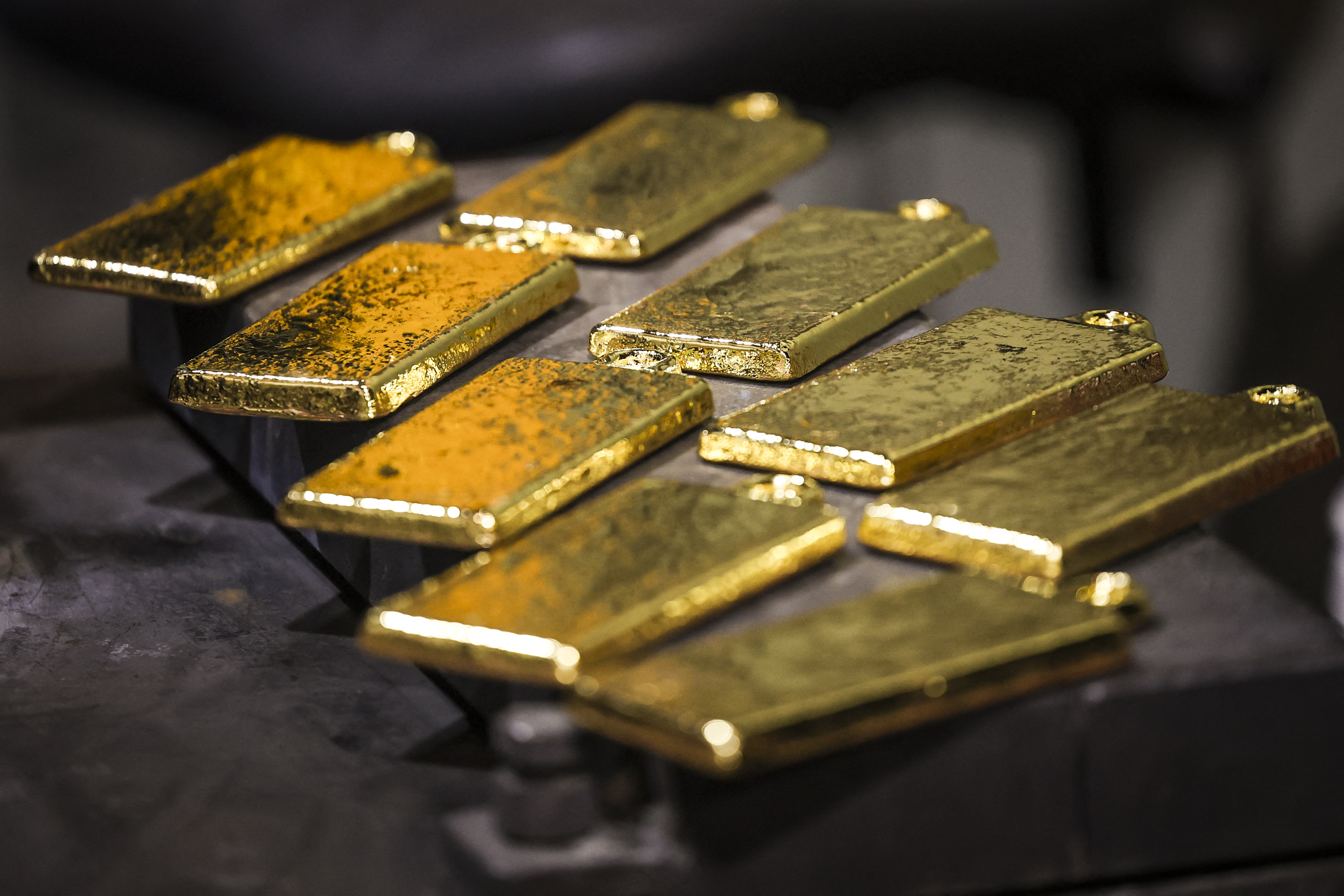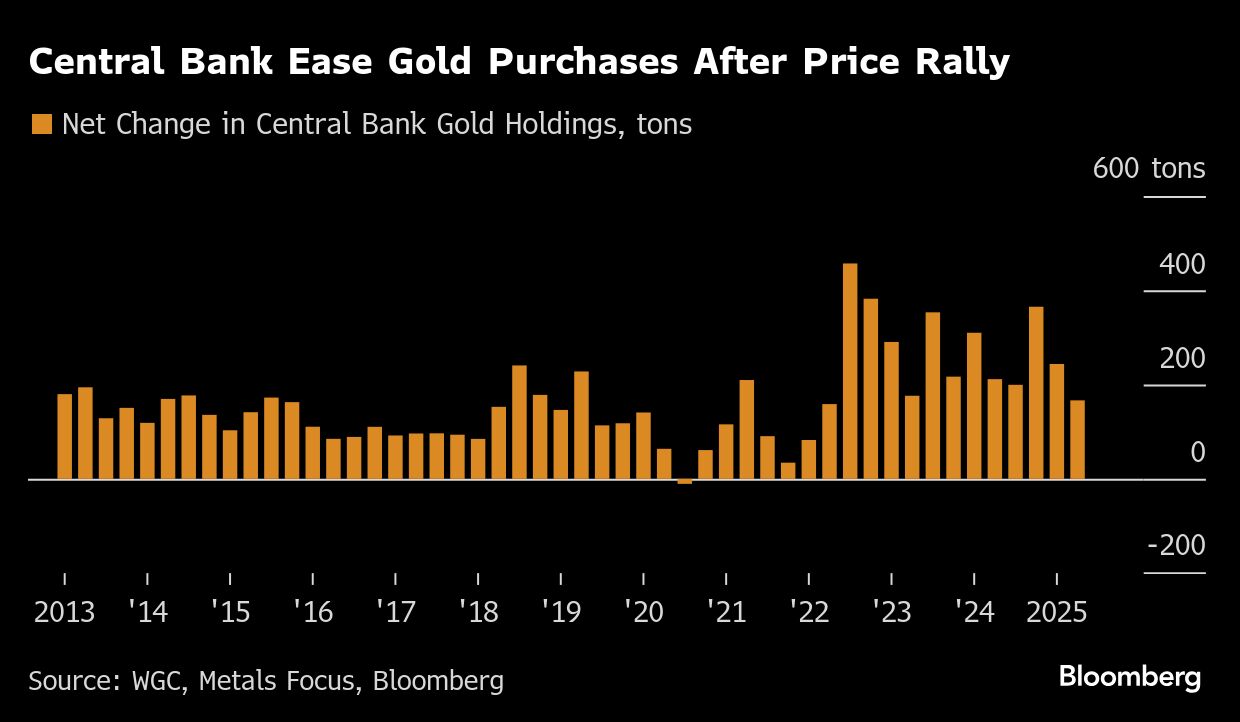
Gold buying by central banks and jewelers eased in the second quarter, as successive all-time-highs in prices led the drivers of a rapid rally to ease their feet off the accelerator.
Central banks bought 166.5 tons in the three-month period, a third less than in the first quarter, bringing purchases for the first half of the year to the lowest since 2022, according to figures compiled for the World Gold Council, a trade body. Central bank demand is now forecast at about 815 tons for 2025.
The institutions have been among the most important drivers of gold’s rally, which has seen it surge by more than a quarter this year as the dollar slid against its peers and investors sought shelter from US President Donald Trump’s trade wars. After touching a record of $3,500 in April, bullion has been mostly range-bound, as traders await a catalyst for further price gains.

“If you’re targeting a proportion of your foreign exchange reserves to be in gold, when the gold price goes up a lot, that reduces the incentive to buy,” said John Reade, a strategist at the WGC, adding that rapid price gains have likely wilted demand from some officials who fear that prices could pull back.
Still, surveys of central banks indicate their gold accumulation is likely to continue. In one recent poll, 95 percent of the institutions said they expected global central bank reserves to increase over the next year. The pace of buying doubled in the wake of the conflict in Ukraine.
ALSO READ: WGC: Continued surge likely in gold investment demand in China market
“I don’t think any of the underlying narrative and motivations why central banks are buying gold has changed,” said Reade.
Total gold demand was still higher for the quarter, in part due to unobserved buying in over-the-counter markets. And in value terms, investors are still purchasing more than ever, given higher prices. Total gold purchases jumped 45 percent year-on-year to $132 billion, according to the WGC’s calculations.
Jewelry demand globally fell to the lowest level since 2020 in the second quarter, as high prices pushed consumers to withhold purchases or opt for lighter-weight items. Still, given surging prices, the value of gold jewelry purchased over the period was still a fifth higher than the year before.
READ MORE: Gold soars, stocks sanguine as investors weigh Trump's latest tariff threat
The report also showed that total gold supply, including recycled gold and net producer hedging, rose 6 percent quarter-on-quarter to 1,249 tons.
Demand from jewel fabricators fell 16 percent quarter-on-quarter to 356.7 tons while total bar and coin demand fell 6 percent quarter-on-quarter to 306.8 tons
Growth in the holdings of gold-backed exchange-traded funds eased in the second quarter, but have “further upside potential,” the WGC said.


